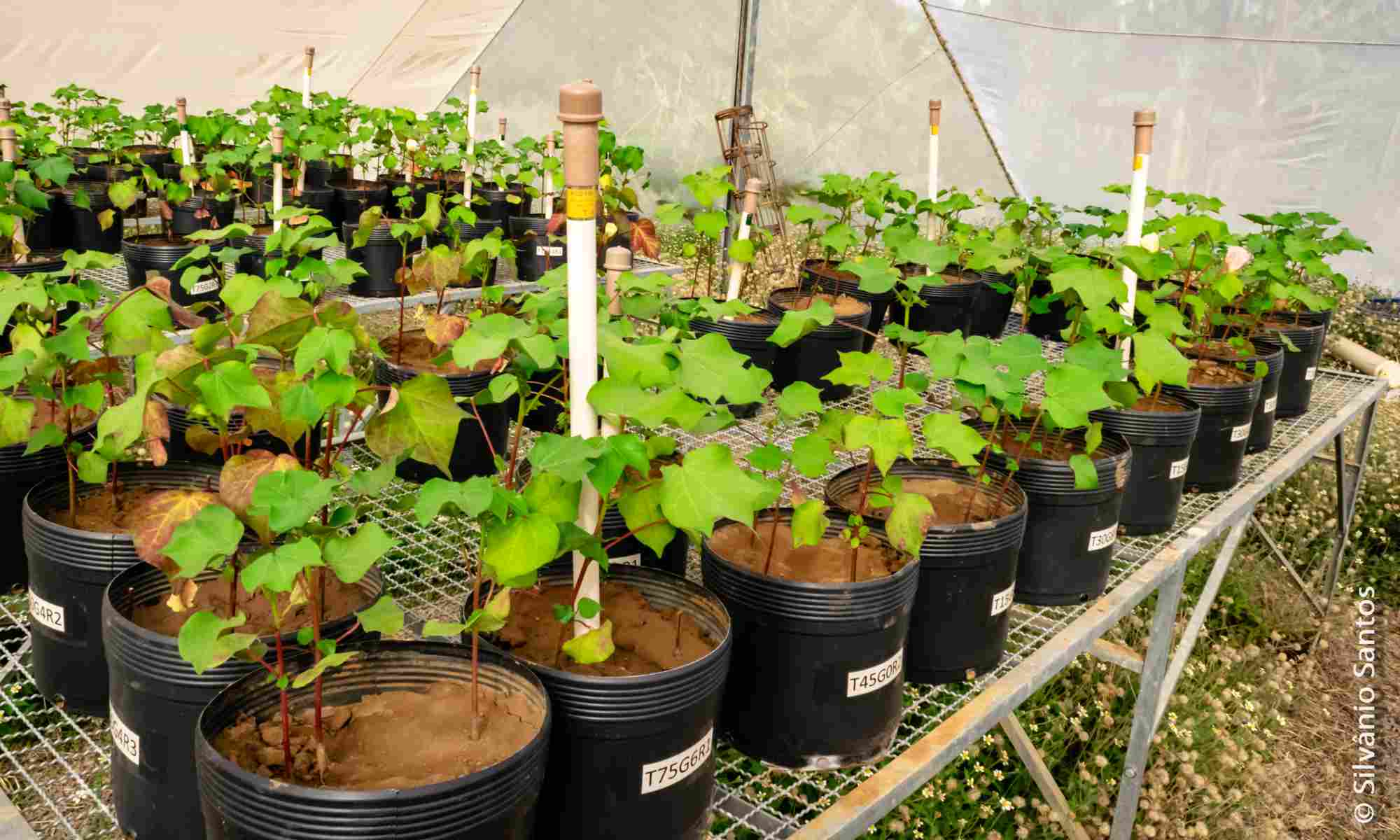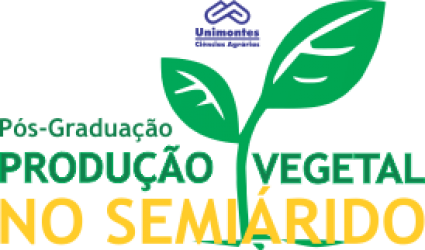- Version
- Download 5
- Tamanho do Arquivo 1,017.64 KB
- Data de Criação 10/06/2021
- Download
RUAS, Suerlani Aparecida Ferreira Moreira Ruas. Caracterização fenotípica em híbridos de milho sob déficit hídrico. 2018. 52 p. Tese (Doutorado em Produção Vegetal no Semiárido) – Universidade Estadual de Montes Claros, Janaúba, 2018.
O déficit hídrico em plantas mesófitas, a exemplo do milho, pode comprometer o desenvolvimento dependendo da intensidade, duração do período restritivo e também do híbrido considerado. Contudo, diferenças observadas entre cultivares de milho crescendo sob condições restritivas de água em diversas regiões do mundo sugerem que essa característica pode ser melhorada. Nos estudos que envolvem a fenotipagem de milho sob condições de seca, têm-se avaliado indicadores fisiológicos e morfológicos em órgãos aéreos, além do rendimento em biomassa e grãos. Apesar da importância reconhecida das raízes na exploração e aquisição dos recursos do solo pela planta, poucos estudos têm sido conduzidos com o objetivo de mensurar a relação entre caracteres do sistema radicular e a exploração da água pelas raízes do milho. O presente trabalho, redigido em duas partes, explora esse campo de investigação a partir do cultivo dos híbridos BRS1010, BR1055 e DKB390 crescendo em vasos sob dois regimes hídricos distintos: restrição de água a partir do quarto dia da semeadura e conforto hídrico desde a semeadura até a colheita das plantas. Quando o milho alcançou o estádio V5, as plantas foram colhidas, sendo registrados indicadores de parte aérea, seguindo-se à remoção do substrato aderido às raízes, e posterior escaneamento e caracterização das raízes pelo sistema WinRHIZO. No primeiro capítulo, o objetivo foi avaliar indicadores de parte aérea e de sistema radicular com resposta contrastante ao cultivo sob restrição e conforto nos híbridos avaliados, empregando a análise univariada. Também foi realizada análise multivariada com aplicação de variáveis canônicas para se agrupar variáveis que melhor expressem a diferença entre os fatores de tratamento: híbridos e regime hídrico. Índice SPAD, temperatura foliar, comprimento do colmo, biomassa seca de parte aérea, profundidade acima do qual 95% das raízes estão localizadas no perfil (D95), área de superfície de raiz e volume de raiz mostraram respostas contrastantes entre os regimes hídricos. A análise por variáveis canônicas revelou que índice SPAD, fenologia, temperatura foliar e diâmetro médio da raiz explicam, conjuntamente, diferenças entre os híbridos nos regimes hídricos estudados. O capítulo dois caracteriza o sistema radicular da planta em diferentes profundidades, tendo por objetivo saber se a arquitetura e desenvolvimento de raízes aos 10 cm de profundidade expressam diferenças em resposta ao regime hídrico nos híbridos estudados; outro objetivo foi avaliar a densidade de comprimento de raiz no perfil do sistema radicular, e também identificar o grupo de variáveis que analisadas conjuntamente, expliquem as diferenças obtidas entre os regimes hídricos nos híbridos avaliados. Para tanto, ao atingirem o estádio V5, o sistema radicular das plantas foi seccionado em frações consecutivas de 10 cm de altura. De cada fração foi retirada uma alíquota com volume de 100 cm3 composta de solo e raízes, de onde se extraiu a massa úmida e seca. As raízes provenientes de cada fração foram então lavadas, digitalizadas e caracterizadas no sistema WinRHIZO quanto a densidade de comprimento de raiz (DCR – cm cm-3), a área de superfície de raiz (ASR – cm2) o diâmetro médio de raiz (DMR – mm) e volume de raiz (VR – cm2) sendo, posteriormente secas e estufa determinando-se a biomassa seca (BS). Na fração que alojava o mesocótilo, após a lavagem cuidadosa das raízes foi avaliado o número de raízes seminais (NRS), o ângulo de inserção das raízes nodais no primeiro (ARNV1) e segundo (ARNV2) verticilos, o número de raízes nodais no primeiro (RNV1) e segundo (RNV2) verticilos, e o número de verticilos no mesocótilo (NVM). Apenas as raízes nodais expressam variação no desenvolvimento em resposta ao regime hídrico empregado. A depender do híbrido considerado foram observadas diferenças na arquitetura (ARNV1,ARNV2, NVM) e desenvolvimento de raiz (BS, DMR, DCR, ASR) conforme o regime hídrico empregado. O híbrido DKB390 conduzido sob restrição hídrica apresentou maior ARNV1 e menor RNV2. E também expressou a menor DCR nas diferentes profundidades entre os híbridos avaliados, independentemente do regime hídrico. Na análise conjunta, ARNV1, ARNV2 e NVM foram as características que melhor explicaram a variação obtida no sistema radicular do milho sob déficit hídrico em comparação ao conforto hídrico.
Palavras-chave: Zea mays L.; água; raiz; análise multivariada
Phenotypic characterization in hybrids of maize under water deficit
The water deficit in mesophyte plants, like maize, can compromise the development of the plant depending on the intensity, duration of the restriction period and the genotype considered. However, observed differences between maize cultivars growing under restrictive water conditions in several regions of the world suggest that this feature can be improved. In the studies that involve maize phenotyping under drought conditions, physiological and morphological indicators have been evaluated in aerial organs, as well as yield in biomass and grains. Despite the recognized importance of roots in the exploration and acquisition of soil resources by the plant, few studies have been conducted with the objective of measuring the relationship between root system characters and water exploitation by maize roots. The present work, in two parts, explores this field of research from the cultivation of hybrids BRS1010, BR1055 and DKB390 growing in pots under two distinct water regimes: water restriction from the fourth day of sowing and water comfort from the sowing until the harvest of the plants. When the maize reached the V5 stage, the plants were harvested, registering shoot indicators, followed by the removal of the substrate adhered to the roots, and later scanning and characterization of the roots by the WinRHIZO system. In the first chapter, the objective was to evaluate aerial part and root system indicators with contrasting response to restricted and comfort cultivars in the evaluated hybrids, using the univariate analysis. Multivariate analysis was also performed with application of main components to group variables that best express the difference between the treatment factors: hybrids and water regime. SPAD index, leaf temperature, stem length, aerial dry biomass, D95, root surface area and root volume showed contrasting responses between water regimes. The analysis by canonical variables revealed that SPAD index, phenology, leaf temperature and mean root diameter explain, jointly, differences between the hybrids in the water regimes studied. The chapter two characterizes the root system of the plant at different depths, aiming to know if the architecture and development of roots at 10 cm depth express differences in response to the water regime in the studied hybrids; another objective was to evaluate the root length density in the root system profile, as well as to identify the group of variables that analyzed together, explain the differences obtained between the water regimes in the evaluated hybrids. For this, when they reached the V5 stage, the root system of the plants was sectioned in consecutive fractions of 10 cm in height. From each fraction an aliquot with 100 cm3 volume composed of soil and roots was extracted from which the wet and dry mass was extracted. The roots from each fraction were then washed, scanned and characterized in the WinRHIZO system for root length density (DCR - cm cm-3), root surface area (ASR - cm2) and mean root diameter (DMR - mm) and root volume (VR - cm2). The dry biomass (BS) was then dried and greenhouse determined. The number of root nodules (NRS), nodal roots insertion angle in the first (RNAV1) and second (RNAV2) verticils, and the number of nodal roots in the first one were evaluated in the fraction that housed the mesocotyl, after careful root washing. (RNV1) and second (RNV2) whorls, and the number of verticils in mesocotyl (NVM). Only the nodal roots expressed developmental variation in response to the water regime employed. Depending on the hybrid, differences in the architecture (ARNV1, ARNV2, NVM) and root development (BS, DM, DCR, ASR) were observed according to the water regime employed. DKB390 conducted under water restriction showed higher RNAV1 and lower RNV2. DKB390 expressed the lowest DCR at the different depths among the evaluated hybrids, regardless of the water regime. In the joint analysis, ARNV1, ARNV2 and NVM were the characteristics that best explained the variation obtained in the corn root system under water deficit in comparison to comfort.
Keywords: Zea mays L.; water; root; multivariate analysis

